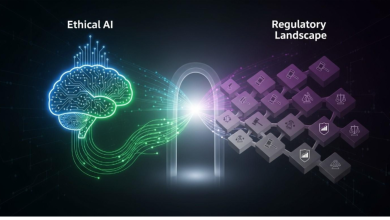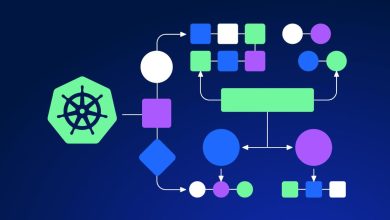Because true agentic AI (systems that plan, tool-use, learn, and act autonomously) imposes far greater demands on compute, orchestration, observability, data, security and governance than typical GenAI applications. Without infrastructure built for this new workload, you’ll hit cost, latency, safety and scaling ceilings.
(The rest of the article explains how, what to build, and how a platform like Clarifai helps.)
Quick Digest
- We define what “agentic AI” means and why it places unique infrastructure demands.
- We walk through the agent stack—from reasoning models to orchestration, serving, data, observability, security and governance.
- We highlight the failure modes when one or more layers are weak: runaway cost, stalled scaling, unsafe behaviour.
- We deep-dive into serving & scaling, orchestration, observability & guardrails, secure by design, data layer, cost & economics, and governance in dedicated sections.
- We surface emerging trends (heterogeneous compute, edge + agentic deployment, beyond-RAG retrieval, multi-agent coordination).
- We include persona-based use cases (SRE, SecEng, Data Lead, Product Ops) and a step-by-step playbook you can follow.
- We conclude with why building on Clarifai’s GPU-optimized hosting + compute orchestration + reasoning engine helps you leap infrastructure risk and scale faster.
Why Agentic AI Succeeds—or Fails—on the Strength of Its Infrastructure
What is agentic AI and why is it different?
Agentic AI refers to systems that plan, act, tool-use, observe, perhaps learn and adapt over time rather than simply respond to a prompt. They orchestrate multiple subtasks, call external APIs, maintain memory, coordinate with other agents or systems. Research describes it as goal-directed autonomy and dynamic multi-agent coordination.
So the first insight: the infrastructure that sufficed for simple GenAI (one-shot prompts) isn’t safe or scalable for agents.
Why infrastructure becomes the bottleneck
- Surveys of enterprise readiness show that 75%+ of organisations are unclear on agentic use-cases, signalling they may under-invest in infra design.
- A recent Gartner note warns that over 40% of agentic-AI projects will be scrapped by 2027 due to cost/infrastructure failure rather than conceptual issues.
- Heterogeneous compute research shows single-vendor GPU clusters may be inefficient for the dynamic graphs of agentic workloads.
Expert Insights
- Enterprises must shift thinking from “model serving” to “agent serving”—where the workflow is multi-model, multi-tool, multi-step.
- Infrastructure must support latency, throughput, cost, observability and safety simultaneously—not just accuracy.
- Vendors tend to underspec the tool-chain, memory, orchestration costs; the infrastructure failure is often invisible until deployment.
The Agent Stack — From Reasoning to Reality
Layers of the stack
- Reasoning & Planning: LLMs or multimodal models generate plans, choose tools, decide next actions.
- Orchestration & State: Agent workflows, memory graphs, tool invocation pipelines, multi-agent coordination.
- Serving layer: High-throughput model inference (LLMs, multimodal), tool execution, API orchestration.
- Data access & retrieval: Vector stores, knowledge graphs, structured/unstructured retrieval—beyond RAG.
- Observability, evaluation & feedback loops: Tracing, metrics, A/B, quality dashboards.
- Security & Guardrails: Prompt/Tool injection defenses, memory integrity, policy enforcement.
- Governance & Cost control: Who can deploy agents, what data they can touch, budget controls, audit trails.
How Clarifai fits
Clarifai provides GPU-optimized hosting and high-throughput inference (544 tokens/sec; 3.6s time-to-first-answer; ~$0.16 per M tokens blended cost) so you can focus on the orchestration layers rather than reinventing the compute stack.
It also offers compute orchestration, model routing and evaluation dashboards—exactly the infrastructure you need when scaling agentic workloads from pilot to production.
Expert Insights
- Modern research shows that agentic workloads form DAGs (directed acyclic graphs) of compute + IO + tool invocation—much more complex than single-model inference.
- A key design insight: infrastructure must support dynamic placement across heterogeneous compute (e.g., older GPU + newer accelerator) and cost-aware scheduling.
- From an enterprise perspective: infrastructure isn’t just about “faster GPUs” — it’s about end-to-end flow: memory, retrieval, tool integration, orchestration.
Example
Imagine a customer-service agentic workflow: the reasoning model determines “Customer has billing issue”, orchestration tool calls “billing tool”, retrieval fetches account data, tool updates status, reasoning informs user. If any layer (serving latency, retrieval delay, orchestration error) fails, the pipeline fails or cost spikes.
Common Failure Modes in Agentic Systems (and Why Basic Infra Isn’t Enough)
Failure scenarios
- Unbounded loops: Agents invoke tools repeatedly with no batch or cost control → runaway spend.
- Memory poisoning: Long-term memory gets corrupted and future reasoning degrades.
- Prompt/Tool injection: A malicious input invokes unauthorized tool APIs.
- Silent degradation: No observability → quality drops unnoticed; latency rises; cost surges.
- Governance breakdown: Agents deployed without audit or controls, leading to compliance and security risk.
Expert Insights
- Infrastructure papers emphasise agent-infrastructure for attribution, shaping interactions and remediation of harmful actions.
- IDC/ white-paper highlights that insufficient infrastructure clarity is a top barrier for scaling agentic AI.
- Real-world data: Gartner expects many agentic projects to be aborted because of unchecked cost/scale.
Example
Consider a retail agent that accesses payment tools, computes refunds, writes to DB, and sends emails. Without secure orchestration and audit logs, a corrupted memory or malicious prompt could bypass checks and issue refunds incorrectly—a governance + cost + security failure.
Serving & Scaling for Agents — The Performance Backbone
What serving demands look like
- Agentic systems need low latency for interactions, high throughput for concurrency, and cost predictability.
- They must support bursting tool calls, fetch + inference loops, dynamic batching, caching of context/prefixes, speculative decoding.
- Infrastructure must support multi-GPU, multi-model, multi-tenant safely.
Comparing serving stacks
- vLLM: offers paged attention, high throughput, caching capabilities.
- NVIDIA Triton / TensorRT-LLM: enterprise-grade, highly optimised for inference.
- Hugging Face TGI: flexible open source stack.
-Kubernetes patterns: KServe v0.15 + ModelMesh, Gateway API Inference Extension, Kgateway.
Clarifai’s value proposition
With Clarifai’s GPU hosting you can leverage pre-optimised serving environments and focus on orchestration/business logic—not reinventing GPU infrastructure or tuning serving pipelines. Model routing ensures cheaper models are used when acceptable to reduce cost.
Expert Insights
- vLLM blog details the internals of high-performance inference stacks (paged attention, prefix caching).
- NVIDIA’s own architecture notes explain the benefits of TensorRT-LLM + Triton in production inference pipelines.
- Kubernetes / CNCF patterns: by embracing KServe and inference gateway patterns you gain autoscaling, multi-tenant isolation, and standardisation.
Example
An enterprise uses Clarifai hosting with vLLM backend for a customer-service agent. It batches 200 requests per second, uses prefix cache to reuse context across tool calls, and dynamically routes heavy tasks to larger GPUs and lightweight tasks to smaller ones—cutting cost by 40% compared to monolithic large-GPU serving.
Orchestration & Multi-Agent Workflows — Making Tools, Memory, and Policy Cohere
Why orchestration matters
- Agents often require tool invocation, memory access, retrieval loops, state-tracking, multi-agent coordination.
- Without orchestration, you get ad-hoc pipelines that are brittle, ungoverned and hard to scale.
Frameworks & orchestration options
- Cloud-native: Vertex AI Agent Builder, AWS Bedrock Agents.
- Data/analytics side: Databricks Mosaic AI Agent Framework, Snowflake Cortex Agents.
- Open-source: LangGraph, Claude Agent SDK.
- Clarifai: compute orchestration + model routing + cost control + eval dashboards.
Expert Insights
- Recent white papers highlight orchestration as the “missing layer” for agentic adoption.
- Enterprises need workflow versions, rollbacks, and eval gates before production deployment to manage risk.
- The orchestration layer is where cost controls, policy checks, tool sandboxing, and observability converge.
Example
A marketing automation agent uses orchestration to: (1) retrieve campaign data, (2) plan next steps, (3) call content-creation tool, (4) call scheduling API, (5) update CRM, (6) log results. Clarifai orchestration tracks the workflow, enforces budget limits, tags tool usage, and routes execution to cheapest valid model.
Observability, Evaluation & Guardrails — Catch Failures Before Customers Do
Why observability is non-negotiable
- Agentic systems have internal steps (tool calls, memory writes, retrieval, model decisions) that need tracing.
- Without monitoring, you’ll face silent cost/quality debt, degraded latency, and safety risk.
- Guardrails (policy enforcement, evals, alerting) turn infra from reactionary to proactive.
What to track
- Latency per call, tool-execution time, memory-access time, retrieval quality, failed tool calls, hallucination rate, cost per session, SLO breaches.
- Dashboards showing regressions after model updates; alarms on anomalous behaviour.
- Versioning of agents, audit log, ability to rewind memory changes or fetch logs.
Expert Insights
- Research emphasises the need for external agent-infrastructure to trace, attribute, and remediate agent actions.
- OpenTelemetry + open-standards (OpenLLMetry) are becoming foundational for LLM & agent observability.
- Vendors like Arize Phoenix and WhyLabs Guardrails are attaining production readiness for this space.
Example
Using Clarifai eval dashboards: every agent build has a “quality snapshot” (latency, cost, hallucination rate). When a change causes hallucination to jump 4×, the dev-ops team automatically rolls back and tags the version until root cause is fixed.
Secure by Design — Countering Prompt Injection, Memory Poisoning, and Supply-Chain Risk
Security stakes in agentic workloads
- Agents can call external tools and APIs, access memory, act autonomously—the attack surface expands dramatically.
- Threats include prompt injection, tool misuse, memory corruption, supply-chain model manipulation.
- Without infrastructural defences, you expose your enterprise to cost overruns, data breaches, compliance violations.
Design patterns and controls
- Least-privilege tool invocation: only allow specific tool APIs per agent.
- Signed memory writes: versioned memory stores, ability to quarantine corrupted segments.
- Tool-allowlists and sandboxing.
- Prompt sanitisation and monitoring.
- Audit trails and policy engines: track what each agent did, when, and by which identity.
Clarifai’s tie-in
Clarifai supports SOC2/GDPR compliance, audit trails, model routing with policy constraints, and built-in cost/usage controls. This allows enterprises to deploy agents with confidence.
Expert Insights
- Papers on agent infrastructure highlight that infrastructure must mediate agent behaviours not just the models themselves.
- OWASP’s emerging “LLM supply chain” risk frameworks emphasise guardrails, provenance, model lineage.
- Realism: “It takes only a handful of poisoned documents to disrupt an agent’s reasoning chain.”
Example
A financial-services agent writing trade orders: infrastructure enforces a policy that memory cannot touch live PII, tool API must require MFA, audit log stamped for every decision, and any out-of-norm cost triggers approval workflow—all enabled by Clarifai orchestration layer.
Data Layer for Agents — From Vector Search to “Beyond RAG” Analytics
Why “beyond RAG” matters
- Traditional retrieval-augmented generation (RAG) is one-shot: fetch docs, generate answer. Agentic workflows need iterative retrieval, structured data access, analytics, memory writes.
- They often mix vector search (unstructured) with SQL/warehouse queries, knowledge graphs, time-series etc.
- Data latency, freshness, access patterns matter for agents in production.
What to build
- Hybrid retrieval pipelines: vector store + structured DB access + real-time context.
- Memory hierarchy: short-term context cache, long-term memory store, tool logs.
- Retrieval evaluation: limiter on stale/faulty data impacting agent decisions.
Clarifai’s value
Clarifai supports vector search + hybrid retrieval and tracks data lineage/usage as part of the orchestration. You get unified infra for retrieval and memory across your agents.
Expert Insights
- Snowflake’s “beyond RAG” announcement emphasises querying both structured and unstructured data for senior decision tasks.
- Research shows agentic tasks benefit from retrieval over structured graphs, not just doc chunks.
Example
A legal-advisor agent: retrieves precedents (vector store), queries current case metadata (SQL warehouse), writes summary into agent memory, then schedules follow-up task. The orchestration tracks which data source was used, latency incurred, and updates the memory store—all part of the build.
Cost, Throughput and Latency — Building for Unit Economics
The cost challenge
- Agentic workflows often involve multiple model calls, tool calls, retrieval loops, memory writes, and possibly retries. Cost per session can escalate quickly unless controlled.
- Latency becomes visible: slow tool calls degrade user experience; high latency kills adoption.
- Infrastructure must therefore deliver high throughput, low latency, efficient batching, speculative decoding, model routing, autoscaling.
Strategies that matter
- Continuous batching and prefetch/prefix caching to reuse context and reduce tokens.
- Quantisation, adapter-based models, dynamic model routing (lightweight vs heavy models depending on task).
- Autoscaling with cost controls, budget alarms, session tracking.
- Metric-driven deployment: monitor tokens/session, tool-calls/session, latency/step, cost/step.
Clarifai’s performance metric
Clarifai delivers 544 tokens/sec throughput, 3.6s time-to-first-answer, and ~$0.16 per million tokens in blended cost for the Clarifai reasoning engine. This means you can focus on orchestration rather than tuning compute yourself.
Expert Insights
- The heterogeneous-compute paper shows that “older generation GPUs + newer accelerators” may deliver similar TCO to cutting-edge homogeneous clusters.
- Real-world infrastructure teams tell me the model cost becomes invisible until you cross 10k sessions/day—not when you are at POC stage. Building telemetry early is vital.
Example
A support-agent pilot initially uses a heavy 70B model for every session—cost spiking at $12/session. Using Clarifai’s model-routing you downgrade to a cheaper model for 80% of sessions, only escalate heavy model when tool use or complexity is detected—cost falls to $2/session and latency stays < 2s.
Governance & Compliance for Agentic Workloads
Why governance is different now
- Agents act autonomously: they access data, call tools, write memory, make decisions—you need explicit oversight.
- Traditional AI governance (model carding, dataset review) is not enough. Agentic governance must cover agents as operators.
- You need inventory of agents, audit logs, policy enforcement, rollback procedures, incident management.
Key governance elements
- RBAC/ABAC: who can deploy, what tools/data the agent can access.
- Agent inventory with versioning: treat each agent as software with release notes, regression test results.
- Audit trails and usage logging: each agent run must be traceable.
- Red-teaming and simulation: test agents with adversarial inputs, memory poisoning, tool misuse.
- Compliance filters and safe-domains: especially in finance, healthcare, regulated industries.
Expert Insights
- As per Deloitte’s guidance: Enterprises must treat agentic AI as business process automation—with the same controls as ERP/CRM deployments.
- Governance frameworks emphasise “attribution, shaping and remedy” as the core of agent-infrastructure.
Example
A banking agent that executes trades: governance enforces that the agent → only reads pre-approved data sets, only invokes tool “trade-execute” if pre-conditions cached, every order writes to immutable log, human review required if cost > $10M, everything versioned and auditable—all implemented via Clarifai orchestration and audit features.
Emerging & Trending Topics to Future-Proof Your Roadmap
What’s rising in infra for agentic AI
- Heterogeneous compute architectures: mixing edge, on-prem, cloud; older GPUs + new accelerators for cost efficiency.
- Edge-deployed agents: agents working in constrained environments (network, compute) such as factories, warehouses, 5G/6G networks.
- Multi-agent ecosystems & protocol standards: communication protocols for agent-to-agent collaboration, standardising agent infrastructure.
- Beyond-RAG retrieval and real-time data access: structured + unstructured hybrid retrieval for deeper decision-making.
- “AI as infrastructure” mindset: treating agents like micro-services, deployable, versioned, with cost-monitoring, SLOs.
Expert Insights
- Cisco’s “Internet of Agents” concept frames agent-infrastructure as as significant as the original internet stack.
- A recent survey suggests compute architectures will migrate from cloud-only to hybrid local/distributed infrastructures due to agentic efficiency demands.
Example
A logistics company deploys edge agents in drones (fleet management), orchestration runs in the cloud—but inference and memory caching happens on-prem to meet latency and connectivity constraints. Their infra integrates Clarifai’s reasoning engine for cloud orchestration + on-prem deployable components for edge execution.
Real-World Personas & Use Cases (Missed by Many Competitors)
Platform SRE
Need: autoscaling, concurrency, model routing, cost alerts.
How Clarifai helps: GPU hosting + orchestration triggers, throughput monitoring, budget alarms.
Insight: Without infra built for agents, SREs get paged at 2 AM — agent loops causing 40 % worse latency and cost.
Security Engineering
Need: memory write controls, tool sandboxing, audit logs, supply-chain checks.
Clarifai tie-in: policy enforcement, SOC2/GDPR compliance, full traceability on agent runs.
Insight: Sec-Eng must treat agents like ‘software robots’ with operator rights, not just conversational bots.
Data Leaders / CDO
Need: retrieval pipelines beyond RAG, mixed structured/unstructured access, data lineage for agents.
Clarifai tie-in: vector + hybrid search, memory store, retrieval metrics locked into orchestration dashboards.
Insight: Agents that do not pull quality data degrade quickly — invest in evaluation early.
Product/Operations
Need: rollout plan, evaluation gates, A/B testing of agents, cost per session metrics, phased deployment.
Clarifai tie-in: eval dashboards, versioning of agents, rollback mechanisms, cost per session reporting.
Insight: Deploying agents without these controls is like releasing software without QA or SLOs — high risk.
Build-Sheet: Step-by-Step Implementation Playbook
- Define the agent use-case and guardrails — list tools, data sources, memory requirements, cost targets.
- Select your reasoning model and serve it — leverage Clarifai hosting or bring your own model; configure model routing.
- Build the serving infrastructure — choose vLLM/Triton/TGI, set autoscaling in Clarifai GPU hosting, monitor throughput & latency.
- Establish orchestration — use Clarifai compute orchestration, or open-source framework; define workflow graph; integrate tool invocation and memory.
- Wire retrieval & memory — connect vector store + structured DB, implement memory write/read, retrieval evaluation.
- Instrument observability — add tracing (OpenTelemetry), alerting, dashboarding (Arize/WhyLabs) within Clarifai orchestration.
- Enable security & guardrails — set tool allow-lists, memory integrity checks, policy engine, audit logs.
- Governance & rollout — version agent deployments, sandbox first, monitor cost/session, human-in-loop approvals, incident runbooks.
- Monitor cost, latency, quality — track tokens/session, tool calls/session, latency/step, cost/step, rollback if SLOs breached.
- Iterate and scale — upgrade models or hardware as needed, reuse orchestration, expand across personas/agents.
Conclusion — A Smarter Infra Blueprint & Why Clarifai Matters
Agentic AI isn’t just “GenAI plus a few tools.” It’s a new workload class—with multi-model, multi-tool workflows, real-time retrieval, memory and orchestration loops. If you deploy it with “basic” infrastructure, you’ll hit cost, latency, governance or safety walls before you scale.
That’s why you need smart infrastructure built for agents: high throughput + low latency serving, robust orchestration, observability and guardrails, secure tooling, hybrid retrieval, cost control, and governance baked-in.
Clarifai is positioned as your partner for this stack—offering GPU-hosting optimised for agents (544 tokens/sec, 3.6s TTFA, ~$0.16/M tokens), compute orchestration that routes and governs models, retrieval and memory integration, and enterprise-grade observability/cost governance.
In short: Build your agents on infrastructure designed for them—and you’ll avoid becoming part of the 40 % that fail. Embrace the stack, instrument it, govern it—and you’ll unlock agentic AI’s real value.
FAQs
Q1: What exactly qualifies as “agentic AI”?
A: Agentic AI is an intelligent system that doesn’t just answer prompts—it plans, invokes tools, uses memory, acts, coordinates, adapts, and may interact with other agents or systems. It goes beyond single-turn generation.
Q2: Can I build agentic systems on standard GenAI infrastructure?
A: At pilot stage maybe—but for production you’ll face bottlenecks (cost, latency, governance). Without infrastructure designed for agentic demands you’ll hit scaling walls.
Q3: How does Clarifai’s infrastructure differ?
A: Clarifai offers GPU-optimized hosting tuned for high-throughput agent workloads, built-in orchestration, model-routing, evaluation dashboards, cost controls and enterprise-grade compliance features—bridging the gap between proof-of-concept and production.
Q4: What’s the most common oversight when enterprises deploy agents?
A: Underestimating the cost and complexity of orchestration, tool integration, memory management and governance. Many think “we’ll just flip the switch,” but without infra circuits you get runaway cost, latency spikes, or safety failures.
Q5: What trend should organisations watch for in the next 12–24 months?
A: Emerging infrastructure patterns: heterogeneous compute for cost efficiency, edge-deployed agents, multi-agent ecosystems and standardised protocols for agent coordination. Preparing your infra now will pay off.




